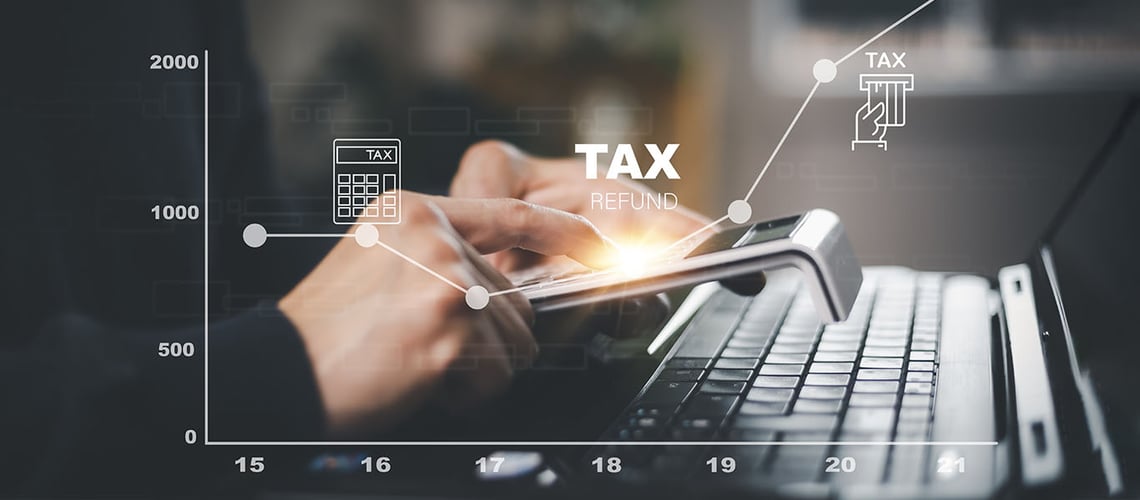7 min read
When Things Don't Add Up: Navigate Common SaaS Accounting Challenges
In a world where the average company uses at least five clouds at once to store data and information, SaaS businesses are in high demand.
SaaS — software as a service — companies host an application and then make it available for customers over the internet. Clients remotely access their data and information using the SaaS company's server.
This makes for neat and tidy dealings for the hiring company since they can access their data through the application at any time. It also eliminates the need for manually stored data — saving time, money, and valuable office space.
As an example, Botkeeper is a SaaS company. 🤖
While things are relatively seamless for the client, behind the scenes, the SaaS company is working hard to provide uninterrupted service. This includes recognizing and handling common SaaS accounting challenges—which they rely on their accounting professionals to manage.
As with individual financial management and taxes, no one wants to mess with the IRS!
Keep reading to discover some common SaaS accounting challenges your SaaS clients face and how to overcome them.

What Makes SaaS Accounting Challenges Different?
Every business is required to pay taxes, and each has its own accounting challenges. Unfortunately, SaaS companies face unique and complicated hurdles around tax time.
In fact, software as a service accounting even differs from other software business providers. The major difference is how SaaS companies deliver their products.
Traditional companies provide physical software to their clients who then implement it in their places of business. SaaS, on the other hand, simply hosts the service for the client using a cloud-based system. That means the SaaS provider retains control of the software, and no tangible items ever change hands.
This difference is what makes accounting for SaaS companies slightly more involved. Businesses must be careful when reporting revenue and expenses since most clients have ongoing contracts, and many sales are based on commission.
Let's take a deeper look at these specific challenges and how to handle them.

How to Handle SaaS Taxes
The answer to this question is constantly evolving. Because software as a service is a newer, non-traditional way of doing business, calculating taxes can be tricky.
The main reason is that SaaS businesses deliver a service, not a product. There's no clear-cut moment when the goods and payment change hands. In fact, the SaaS business and customer relationship are often ongoing for the duration of a contract (or multiple contracts, ideally).
Without having a simple way to determine revenue, how do SaaS companies file taxes?
SaaS Businesses and Sales Tax
Tax laws vary from state to state, but in many cases, SaaS businesses are exempt from sales tax. That means they can't legally place a sales tax on their product if they're selling it in a state that prohibits such action. Your client may want to take this into consideration when establishing the company and opt to do business in a state that allows sales tax on software.
If they're running their business over several different states, they might qualify for a nexus, proving that the company has an established presence in the state where they sell the software from.
Each state has its own nexus, or presence, qualifications. SaaS companies can establish a presence in two ways: physically or through a partner, employee, or contractor.
A physical presence requires them to have an address, office, or co-working space in that state. In some cases, simply having an employee on the payroll who lives in the state or travels there to sell the SaaS qualifies them for a nexus.
SaaS Expense Types
SaaS companies have unique expenses to document. To help simplify things, try splitting expenses into two categories: customer-related costs and software development and maintenance costs.
In most cases, expenses related to software development and maintenance can be written off. Customer-related expenses, on the other hand, can be handled in a couple ways: you can choose to incur them or defer them.
More on this later, but for now, let's focus on the four most common expense categories for SaaS businesses.
1. General and administrative
General and administrative expenses are categorized as the daily cost of running a business. These expenses are not directly related to the production of the product or service.
These expenses are common among many businesses and might include:
-
Office space and supplies
-
Utilities
-
Internet
-
Payroll
Even a software as a service company needs staff, an office to work from, and supplies. A secure internet connection is of the utmost importance and is rolled into G&A costs, too.
2. Research and development
Research and development is a big expense for SaaS companies. After all, the entire product is based on software development!
R&D expenses for a SaaS company include the staffing costs for building the service. This encompasses the engineering team, cost of equipment, licensing software, and any other incurred expenses related to developing the product.
New SaaS companies can expect research and development to be their biggest expense. After they're done building the business from the ground up, expense levels will balance out. Over time, they may see a spike in their sales and marketing expenses.
To keep costs in check, perform a market analysis against industry norms to make sure they're investing a reasonable amount in the development stages.
3. Sales and Marketing
Every company will incur sales and marketing expenses, and a SaaS business is no different. Encourage clients to track sales and marketing efforts to determine which methods are working and which need a reboot.
These expenses will include staff (marketing and sales teams), plus their commission. Advertising costs will vary depending on the size of the company and how much time and money they want to invest.
4. Cost of Goods Sold (COGS)
Determining the cost of goods sold for SaaS companies can pose a challenge since they're selling a service, not a tangible product.
COGS will help outline their gross margins, as well as their customer lifetime value. These are important metrics at the core of any successful SaaS company.
The cost of goods sold isn't just about revenue. This metric encompasses customer service expenses, as well as any internal systems used to host that service. These include an email server, a cloud host, and other software.

Incurring and Deferring Expenses and Revenue
The difference between incurred and deferred expenses is relatively simple. A deferred expense is one that has already been incurred (paid for or obtained) but not yet consumed or used.
At this time, the cost is documented as an asset. When the service or product is consumed, the cost is then moved into the expense column.
Deferred Expenses
Understanding deferred expenses for SaaS businesses is vital to keeping the records up-to-snuff and the business compliant.
Let's say a customer contracts your client's SaaS services for two years and chooses to pay the entire amount upfront. That's a reason to celebrate! Except you should hold on that because you can't count that payment as revenue just yet. After all, they haven't delivered two years worth of services.
Instead, this figure must be deferred or spread out over the course of the two-year contract.
The good news is that within the cost of the service as outlined in the contract, there are likely expenses they can claim immediately. Things like setup fees, license fees, and implementation fees are all one-time payments that the customer makes upfront.
The monthly cost of the service, however, must be deferred and drawn upon each month. This money should be placed in a holding bank designated specifically for this purpose.
Expenses, Commission, and Revenue
Another accounting challenge for SaaS businesses is matching commissions to revenue.
An accounting rule of thumb is that you must match commission payouts with revenue earned. That means you document expenses when they occur, not when they make the cash payment.
Most SaaS businesses follow an accrual-based accounting model which means that revenue is calculated when it's earned, before any money actually changed hands. SaaS businesses deliver the service with an understanding and agreement that the client will ultimately pay for it. Upon signing the agreement, the SaaS company documents the amount as revenue, even though they haven't received payment.
The problem is, the client is paying commission to employees on money that they haven't yet received. The revenue needed to cover January's commissions isn't received until February.
This is a risky way of doing business for a few reasons. One, they're laying out commission money before they actually receive the revenue attached to it.
Second, what happens if either the employee leaves the company, or the company part ways with the customer? The client has now paid commission to someone who no longer works for them, or they paid out based on the revenue they'll never see.
The easiest way around this is to pay commissions based on revenue, not on the contracts obtained. This will require you to defer the expenses booked, but ultimately, it's a safer way of doing business for your client.

Revenue and Cost Recognition
Most businesses have no problem identifying exactly when they received revenue. They deliver a service or product to the customer, and the customer provides payment (or revenue). And just like that, the deal’s done!
But revenue recognition for SaaS companies isn’t so simple.
According to the Financial Accounting Standards Board (FASB): "An entity should recognize revenue when (or as) it satisfies a performance obligation by transferring a promised good or service to a customer. A good or service is transferred when (or as) the customer obtains control of that good or service.”
But with SaaS companies, the customer never "obtains control" of the good or service. So when should a SaaS business claim revenue?
Companies offering cloud-based services need to recognize the revenue over the duration of the contract, not upfront. Of course, this poses another accounting challenge.
Most SaaS companies adopt a subscription model which details the client's payment method as weekly, monthly, or annually. In turn, the SaaS company provides a service.
The company must recognize all revenue it receives over the duration of the contract. Seems simple enough, right?
It is, but another factor some SaaS businesses fail to realize is that they have to average the expected lifespan of their customers. This helps them properly project ongoing revenue.

Multiple Elements
Most SaaS companies offer a variety of services. If clients are contracted for more than one service, you have to look at each individual deliverable and determine how to claim revenue.
These are known as multiple elements. The easiest way to assess a source of revenue is to determine if the deliverable has standalone value or is made up of various elements.
The most efficient way to do this (and avoid confusion) is to for the client to clearly outline each product and service plus all related charges in the contract.
Some areas to focus on include:
-
Storage fees
-
Set up fees
-
Prepayments
-
Data capture fees
These are generally the areas auditors focus on and where SaaS businesses get tripped up.
Don't Let SaaS Accounting Challenges Keep You From Success
With the right accounting and bookkeeping on their side, your client can face SaaS accounting challenges with confidence.
And while you're establishing the complexities and solutions of accounting for your client's SaaS business, why not turn to Botkeeper to automate their bookkeeping? Its speed, accuracy, and proprietary machine learning make it a vital partner in compliance for complex entities of all kinds. Get started today!



